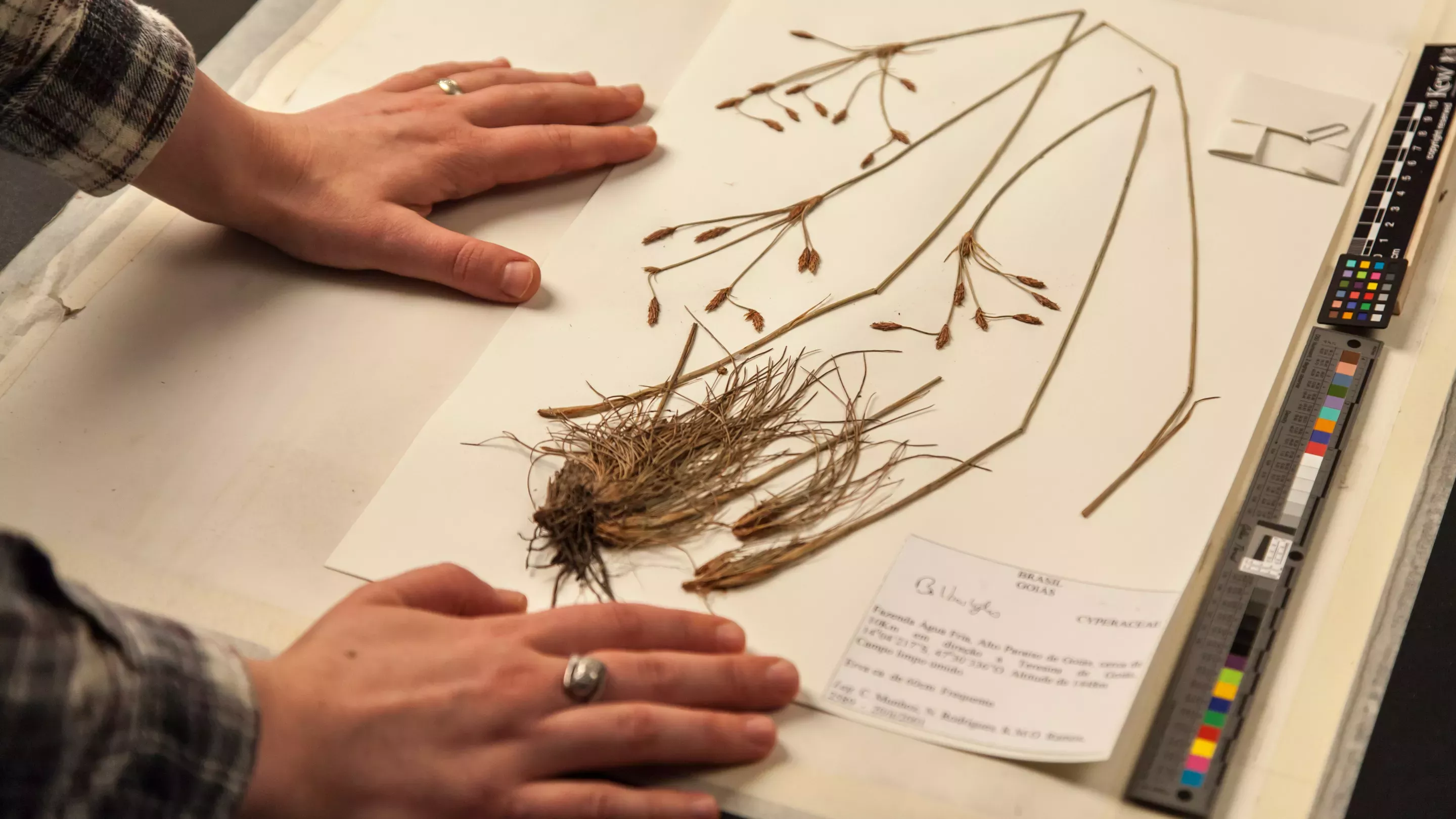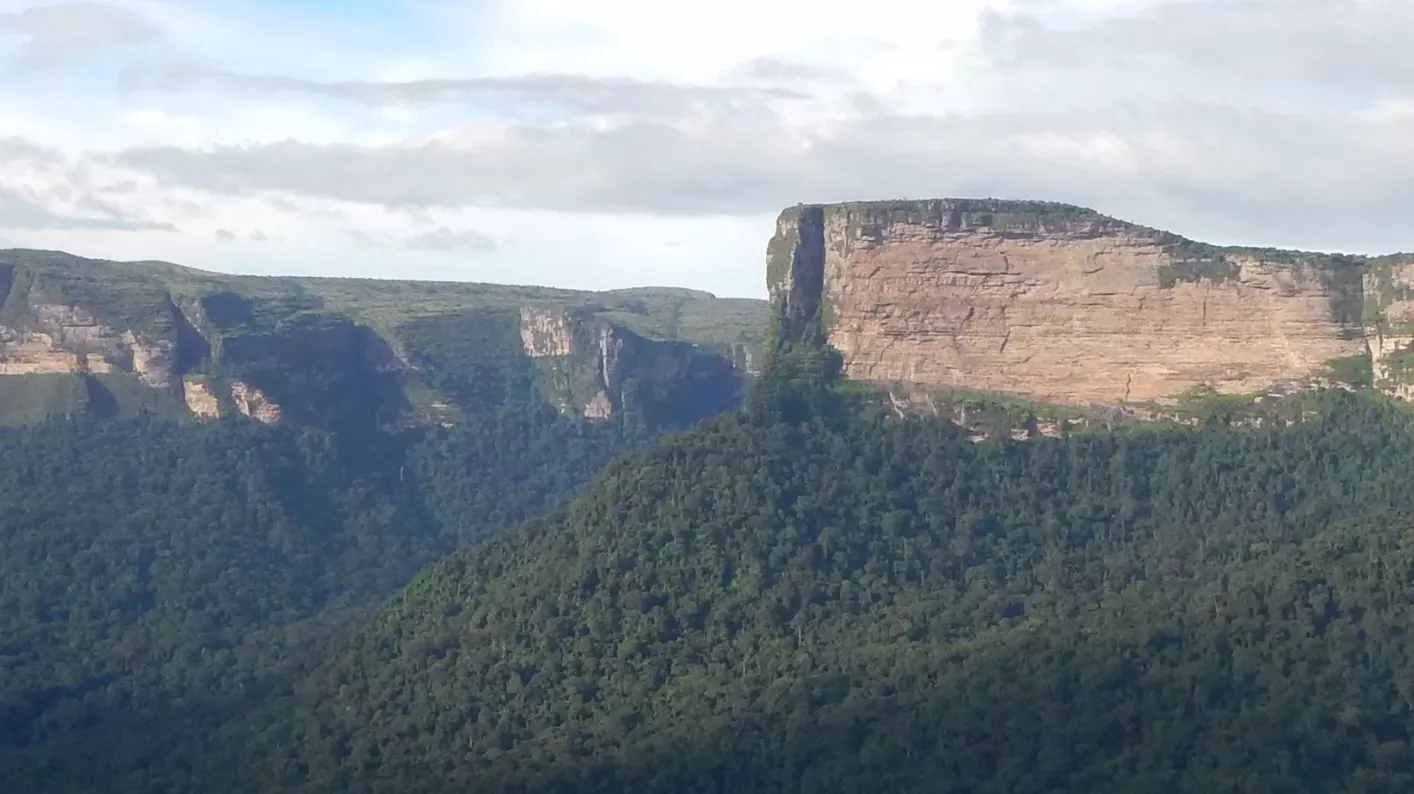
Tree of Life
Building on the success of PAFTOL, the Tree of Life initiative is expanding and populating the tree of life for plants and fungi.
Building the tree of life
The Herbarium is a collection of dried plant specimens that are stored, catalogued, and arranged by family, genus and species for study.
With over seven million specimens, Kew’s Herbarium collection is one of the largest in the world. It is an unrivalled evidence base that underpins our scientific research.
Each specimen is an immense source of information that can tell us what plants look like; where they are found; what environmental niche they occupy; which species are threatened with extinction; what morphological and chemical variation occurs; and, when they flower or produce seed.
We can even extract DNA from them to study relationships and evolutionary processes.
Around 20,000 specimens are added to the collection each year, a quarter of which are collected by Kew staff with partners from around the world, the remainder being sent from other herbaria worldwide.
Individual plants (or parts of plants) are preserved and cared for over time so that current and future generations can identify plants, study biodiversity and use the collection in support of conservation, ecology and sustainable development.
The Herbarium holds specimens of vascular plants which include ferns, lycopods, gymnosperms (including conifers and cycads) and flowering plants.
The collection is representative of global vascular plant diversity, containing around 95% of vascular plant genera and 330,000 type specimens, which act as standards for identifying the correct name for a plant.
Non-vascular plant specimens, such as bryophytes (mosses and liverworts), were transferred to the Natural History Museum following an agreement in 1961.

Our Herbarium is open to academic visitors, but visits must be booked in advance.
Each year we welcome hundreds of researchers from institutions around the world to study our collections, ranging from plant taxonomy and evolutionary studies to conservation planning, agricultural research, environmental and climate science. These visitors also add value to the collections by updating their curation.
Other academics, such as historians, use the collections as records of discovery, exploration or collaborations over the past 250 years.
We also send out around 10,000 specimens each year as loan or exchange material to scientists worldwide.

Our Herbarium holds vast quantities of data still to be unlocked. That’s why we’re embarking on a large-scale project to digitise the collection and make the data freely available online to anyone, anywhere.
Digitisation and digital innovation will allow data sharing of images and data to countries of origin, while helping scientists around the world conserve plants and find solutions to some of the most critical challenges facing humanity, for example the next generation of climate-resilient crops.
When William Hooker was appointed Director of Kew in 1841 there was no official herbarium. Before then, Sir Joseph Banks’ herbarium and library in Soho Square had been used for queries on plant names and classification. Hooker then made his own collection, perhaps the largest in private hands, available to staff and visitors at his home close to Kew.
The ground floor of Hunter House became available in 1852 and was used to house Hooker’s herbarium, alongside the herbarium and library of Dr William Arnold Bromfield. The first curator, Allan Black, was appointed in 1853. Subsequently, eminent botanists, including George Bentham, donated their own collections to that of the herbarium of William Hooker.
In 1877, the need for greater space, due to botanical exploration of the British Empire, led to the first wing being added. Three further wings were added between 1903 and 1969, with further expansion into the quadrangle in 1989, and a modern wing with climate control was added in 2010.
Although the Herbarium was founded in 1852, many of the subsequently donated collections contained earlier material.
The oldest collections in the Kew Herbarium are a few specimens from the Petiver Herbarium, collected by Samuel Brown in India and dated 22–27 April 1696.

Building on the success of PAFTOL, the Tree of Life initiative is expanding and populating the tree of life for plants and fungi.
Building the tree of life
Identifying and mapping Tropical Important Plant Areas in critical sites for plant conservation across the tropics.
TIPAs